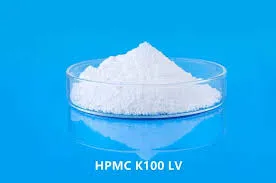
Nov . 12, 2024 02:48 Back to list
hpmc grades and uses
HPMC Grades and Uses A Comprehensive Overview
Hydroxypropyl Methylcellulose (HPMC) is a versatile and widely used polymer derived from cellulose. As a non-ionic, water-soluble polymer, HPMC has found applications in various industries due to its unique properties, including thickening, emulsifying, and film-forming capabilities. Understanding the different grades of HPMC and their specific uses is crucial for manufacturers and formulators in order to harness its full potential.
HPMC Grades
HPMC is categorized into several grades based on the degree of substitution and the viscosity of the solution. The primary characteristics that differentiate HPMC grades include the methoxy and hydroxypropyl content, as well as the viscosity levels in various concentrations.
1. Low Viscosity Grades These are typically used in applications requiring lower thickening properties. Low viscosity HPMC grades are ideal for aerosol products, as they help improve the stability of the spray and enhance the product's performance without adding unwanted bulk.
2. Medium Viscosity Grades These offer a balance between thickening and binding properties. Medium viscosity HPMC is commonly utilized in construction materials, such as tile adhesives and wall putties, where it provides workability and water retention, ensuring that the mixture remains workable for longer periods.
3. High Viscosity Grades Known for their exceptional thickening abilities, high viscosity HPMC grades are favored in applications such as coatings and paints. They help control the rheological properties of the formulations, preventing sedimentation while ensuring a smooth application.
4. Specialty Grades Certain HPMC grades are designed for specific applications, such as food industry certifications or pharmaceutical uses. For instance, some grades are suitable for use in food products as thickeners or stabilizers, while others are utilized in pharmaceutical formulations for drug release control.
Uses of HPMC
hpmc grades and uses

Given its diverse range of properties, HPMC finds its application across multiple sectors
1. Construction Industry HPMC is a crucial additive in construction materials. It enhances water retention, optimizes bonding, and provides lubrication in plaster, mortar, and concrete mixtures. The ability of HPMC to improve the performance of tile adhesives and leveling compounds leads to better adherence and workability.
2. Pharmaceuticals In the pharmaceutical sector, HPMC is used as a binder in tablet formulations, providing controlled release of active ingredients. It is also utilized in ophthalmic formulations as a lubricant, ensuring comfort and effective delivery of medication.
3. Cosmetics and Personal Care HPMC's thickening properties make it a valuable ingredient in cosmetic formulations, including lotions, creams, and gels. It helps stabilize emulsions, providing a desirable texture and enhancing product performance.
4. Food Industry In food applications, HPMC functions as a thickening agent, stabilizer, and emulsifier. It is commonly found in sauces, dressings, and frozen foods, helping maintain consistency and texture while improving shelf life.
5. Industrial Applications HPMC is utilized in various industrial applications, including paints and coatings. Its presence helps prevent settling of pigments and ensures uniform dispersion, resulting in smooth and durable finishes.
Conclusion
In summary, Hydroxypropyl Methylcellulose is a multifaceted polymer with a variety of grades tailored for specific uses across diverse industries. Understanding the characteristics and applications of each HPMC grade enables manufacturers to optimize their formulations, enhancing product performance and reliability. As industries continue to innovate, the demand for HPMC is likely to grow, solidifying its position as a vital ingredient in modern formulations. Whether in construction, pharmaceuticals, cosmetics, or food, HPMC remains an indispensable component driving efficacy and quality in countless products.
-
Versatile Hpmc Uses in Different Industries
NewsJun.19,2025
-
Redispersible Powder's Role in Enhancing Durability of Construction Products
NewsJun.19,2025
-
Hydroxyethyl Cellulose Applications Driving Green Industrial Processes
NewsJun.19,2025
-
Exploring Different Redispersible Polymer Powder
NewsJun.19,2025
-
Choosing the Right Mortar Bonding Agent
NewsJun.19,2025
-
Applications and Significance of China Hpmc in Modern Industries
NewsJun.19,2025







